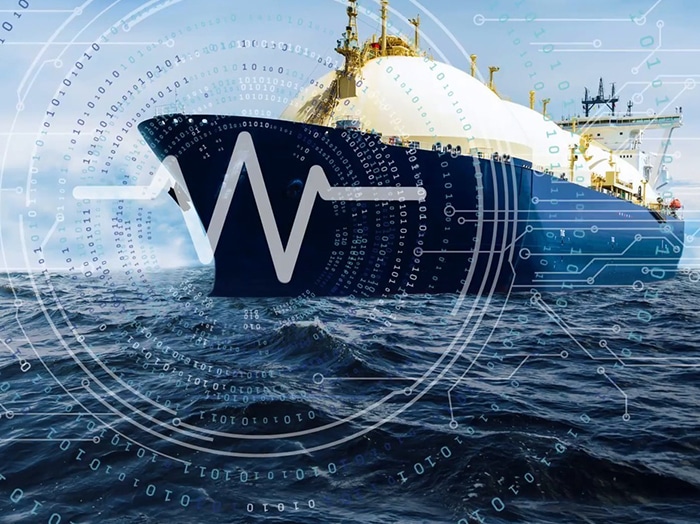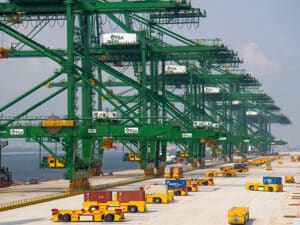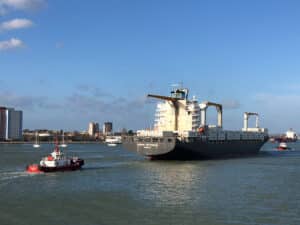
Op-Ed: Connectivity and the seafarer
Written by
By Kristin McGillicuddy, Senior Marketing Manager, Commercial & Leisure Maritime
Before you begin reading this, stop and grab a pen and a piece of scrap paper.
Really do it. We promise it will make this article so much more meaningful.
Think about the last three days and jot down how many times the following events occurred:
- You called or received a phone call from a loved one.
- You paid a bill that was due on your phone or laptop.
- You listened to music or watched a movie on your phone.
- You checked on a bank account or credit card online.
- You scrolled through social media to catch up on friends’ news.
- You called your doctor or visited their online portal.
- You checked the news or weather on your cell phone.
- You texted a friend just to say hi.
- You celebrated a special milestone with a video call with a family member.
Now stop and imagine. You are in a place where your cell phone only offers the content and services available on the device in a non-connected mode. There is no Internet access and no 5G service. Texts don’t come through and calls can’t be made. There is no access to banking or credit card sites, and no way to reach your doctor for a question or appointment. Social media is but a dream, a nice-to-have that simply doesn’t work—the platforms are frozen in time from when you last visited them, in range of a cellular or Wi-Fi connection. Movies and music can’t be enjoyed.
Now imagine living this way for three weeks or three months at a time. Maybe longer.
Say hello to the life of a commercial seafarer.
According to UNCTAD (United Nations Conference on Trade and Development) and its 2022 report on maritime transport, there are over 102,000 active commercial vessels in the world. According to the International Chamber of Shipping, there are 1,892,720 active seafarers on these ships. And most of these seafarers are experiencing the lack of connectivity and communication we have described in the scenario above. For weeks and months at a time.
And we wonder why there is a shortage of skilled crew on our vessels?
Interestingly enough, if we survey the many fleets and vessels out on the water, we would find that most—dare we say all—have some type of connectivity on board. How else would vessels communicate with shore, review important weather forecasts, send and receive data vital to ship operations, or send a message for assistance in times of need? Furthermore, in May 2022, updates to the Maritime Labor Convention 2006 (MLC) mandated the right to connectivity for seafarers on vessels, including Internet access. Yet, the last few reports of the Seafarer’s Happiness Index have indicated that lack of connectivity and inadequate data allocation remains a key source of discontent among crew. As one seafarer reported earlier this year, “My data limit barely allows my phone to wake up.”
So, if ships have connectivity technology and seafarers want (and have a right to) connectivity, where is the disconnect? Here are some barriers contributing to the issue:
- Fleet managers and operators often charge for data, and crew can’t afford it.
- The technology onboard might not provide coverage in locations where seafarers sail.
- Vessels focus on data and necessary comms, but have not accounted for crew communications.
- Staff captains prohibit crew from using the Internet for fear of cyber breaches.
- Crew data allocations are simply inadequate to support the activities they want or need.
Fortunately, there is a solution.
Jamie Airs is the Global Content Advisor for KVH Industries and leads a team focused entirely on providing quality content and connections to home for global seafarers. Airs tells us, “The first part of the puzzle is connectivity through technology. And the second part of the puzzle is crew-focused content. These go hand-in-hand in giving today’s seafarers the connections they need to be happy and healthy onboard their vessels.”
KVH is a leading provider of maritime connectivity technology and launched their TracNet hybrid solution to meet this very need. TracNet offers satellite, 5G/LTE, and Wi-Fi integrated in one antenna. Intelligent, automatic switching keeps the vessel connected to whatever channel is the best at all times, analyzing factors like cost, signal strength, jitter, and packet loss. Vessels can plug in additional options like Iridium or Starlink, which will serve as alternatives for connectivity through the automatic switching feature.
In short, TracNet keeps the vessel always connected. And it does so in a manner that offers the least expensive and highest quality connections, saving the ship money, avoiding the need for multiple pieces of hardware and multiple suppliers, increasing reliability, and offering flexibility for supporting multiple needs and applications for operations and crew. Chris Watson, vice president of marketing and communications at KVH says, “This multi-channel, multi-orbit, hybrid approach to connectivity is the future of communications in the maritime industry. At KVH, we offer one connected solution, with the convenience of a single monthly bill and our amazing 24/7 service and support. Cybersecurity is built in, and vessels can allocate data and utilize application controls.”
Jamie Airs talks more about crew-focused content. “Our flagship crew wellbeing service is called KVH Link—it’s very competitively priced and delivery of the content is done outside of the vessel’s airtime plan so no data allocations are used. It essentially provides an entertainment hub onboard for the crew to enjoy as a group or on personal devices. KVH Link incorporates news, sports, music, karaoke, TV, and movies. We cater to our key demographic so crew can enjoy big Hollywood blockbusters but also a great selection of Hindi, Tagalog, and world movies, all in a wide array of languages.”
Jamie emphasizes the importance of making the right hardware and content accessible to seafarers, not just for the good of the seafarer, but also for the bottom line of the shipping company. He says, “As we know, the number of cadets coming through maritime academies is probably at the lowest it’s ever been, so there’s competition over an increasingly small talent pool. Seafarers, especially Gen Z graduates who have always lived with the Internet close at hand, have basic expectations of connectivity and welfare onboard, and they’ll choose an employer based on this need, causing recruiting and retention issues for shipping companies. Yet, there’s an ongoing argument that ship owners can’t afford to provide an adequate level of connectivity, when actually, shipping companies can’t afford NOT to provide this service, given the competition for crew and the anticipated crew shortfall.”
Jamie explains that KVH’s role is to innovate not just in terms of developing better technology, but also to make connectivity accessible. KVH wants providing basic connectivity to crew to be an easier decision for the ship manager. He says, “A good example is KVH’s AgilePlans ONE service, which offers our award-winning hybrid network technology with no upfront capital expenditure, plus subsidized shipping and installation, no commitment, and no maintenance costs. This is obviously hugely beneficial. And it’s a great example of how we can make a real difference in the day-to-day lives of crew while also making it an easy decision for the ship manager.”
What if your fleet is already well-equipped with non-KVH equipment, like Intellian or Cobham? Chris Watson says this is no problem. “We recently launched our KVH ONE OpenNet program, which allows you to bring the advantages of everything we’ve just described to your vessel with your current antenna, with no hardware changes and a simple software update,” says Chris. “And with our KVH ONE network, you now have access to all our value-added services like our Managed Firewall, Cloud Email, Crew Internet—and that amazing KVH Link Crew Content service. You’ll even have access to our automatic switching technology so you can add a Starlink or other communication option to the system, and it will keep you always connected to the best option at all times.”
We believe connectivity is a fundamental right for seafarers. And with everything we’ve just described, every vessel can bring the best onboard in terms of connectivity and content, in an affordable, efficient manner. Providing this vital access to today’s crew not only benefits these valued team members, it also benefits the company’s business objectives in recruiting and retaining needed employees, and keeping the world’s commerce moving.
What are you waiting for?




